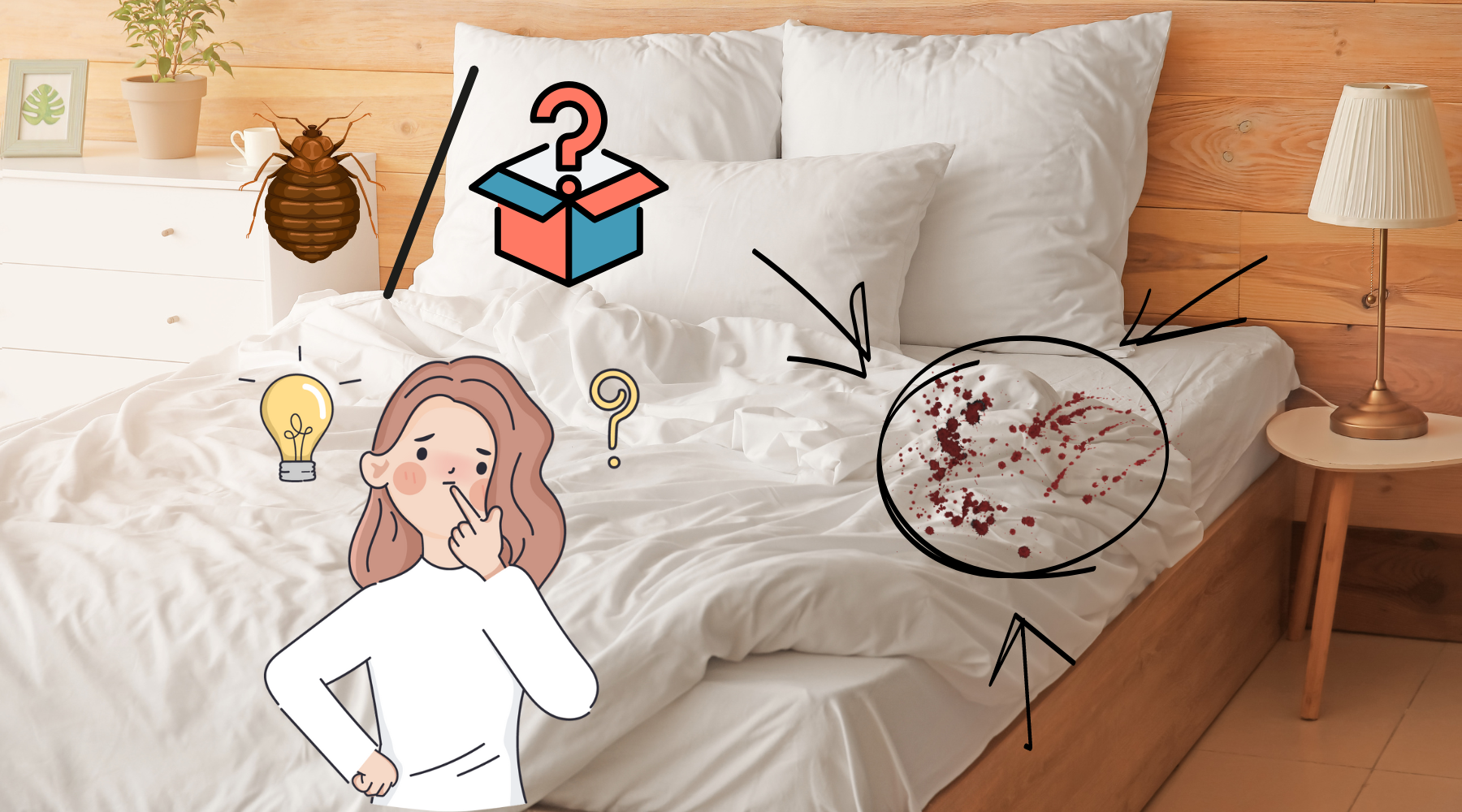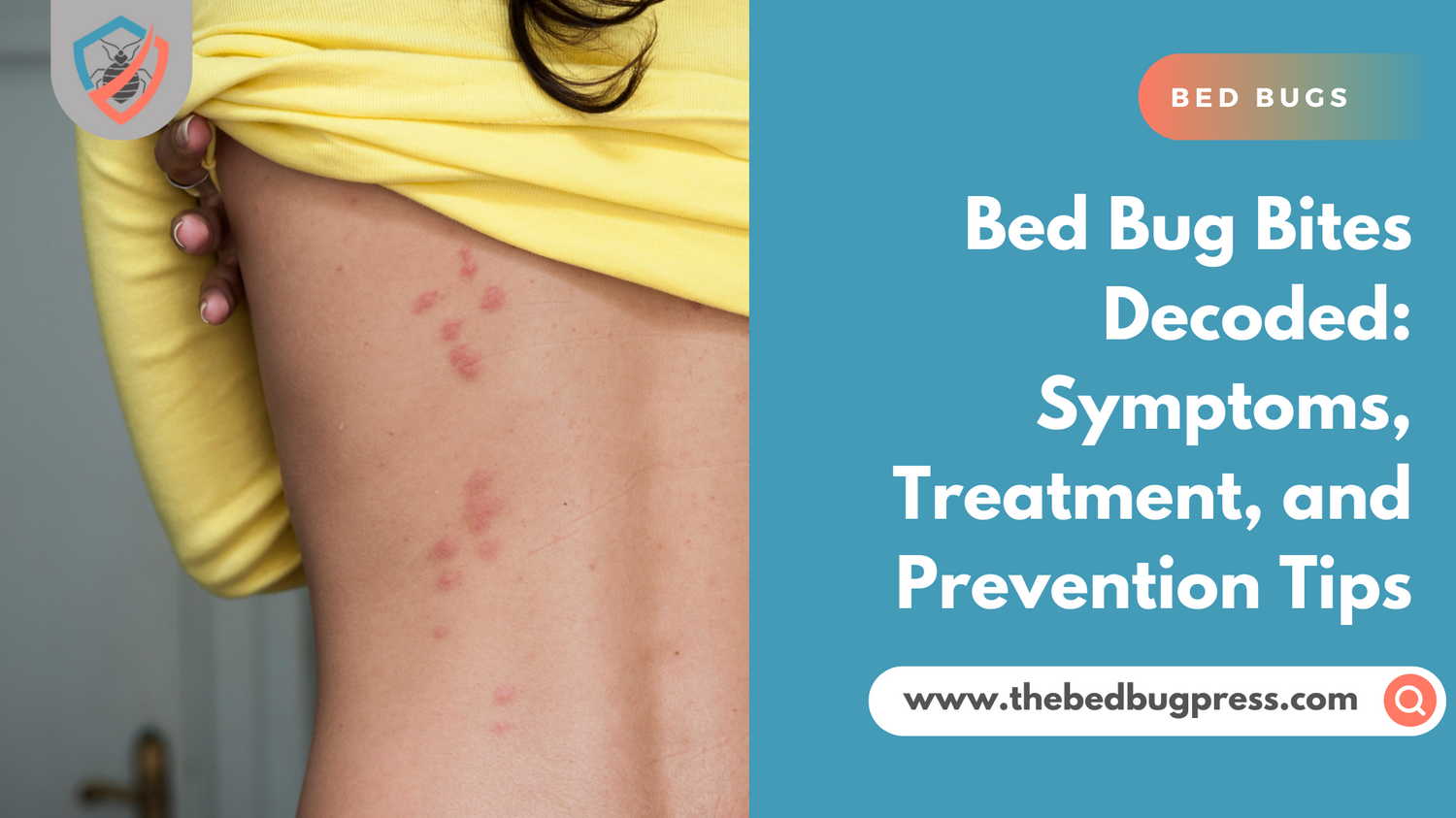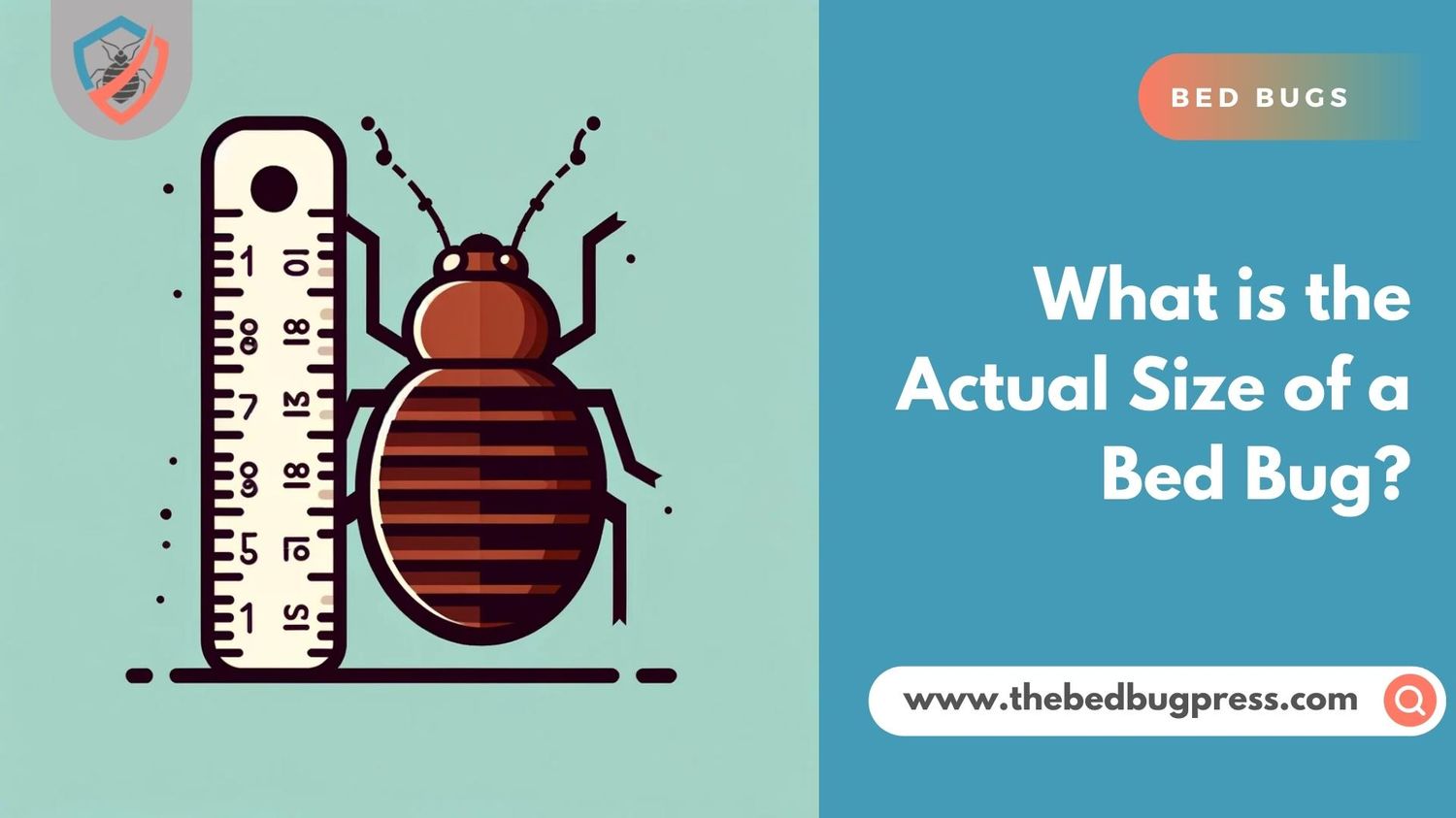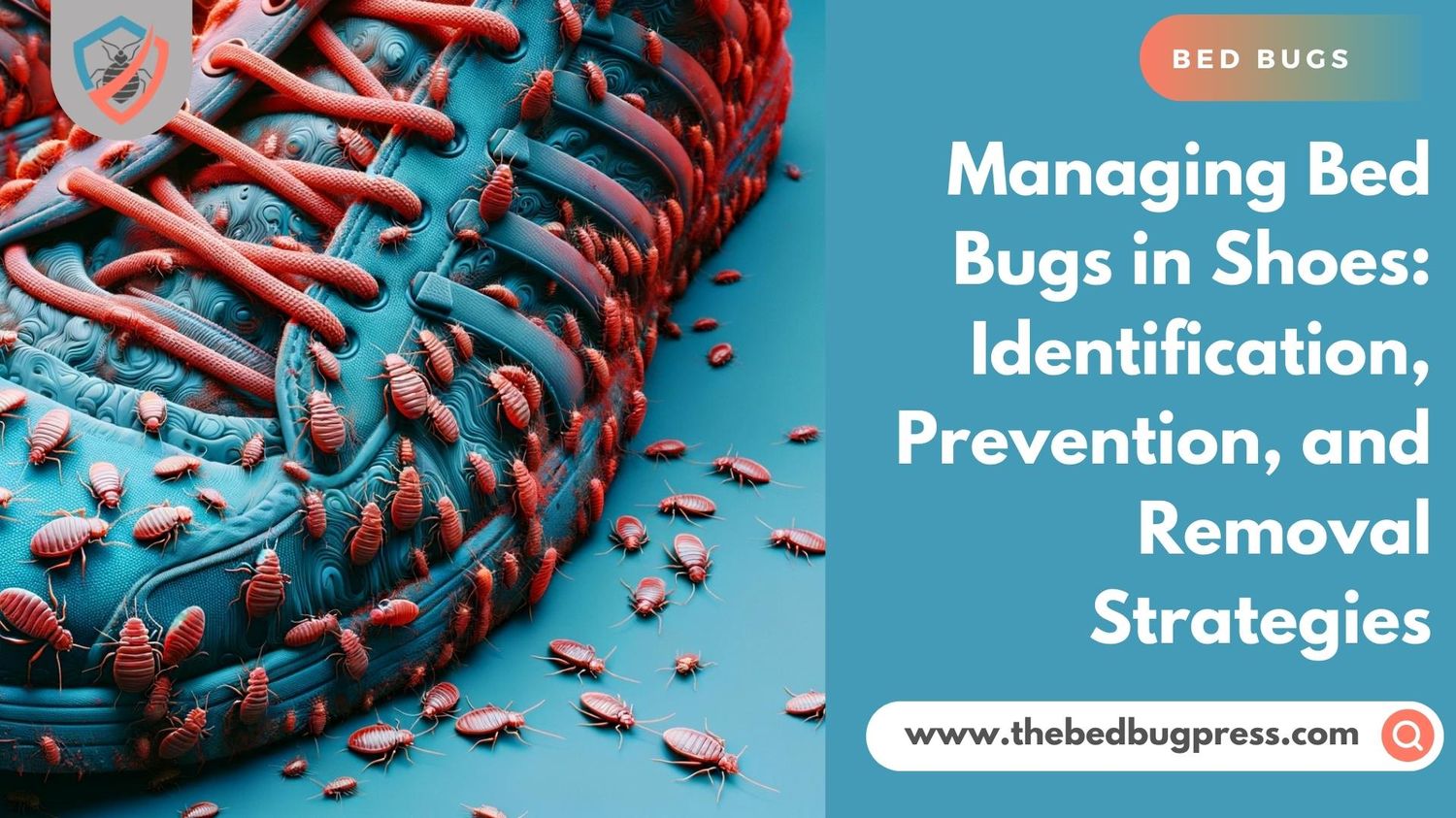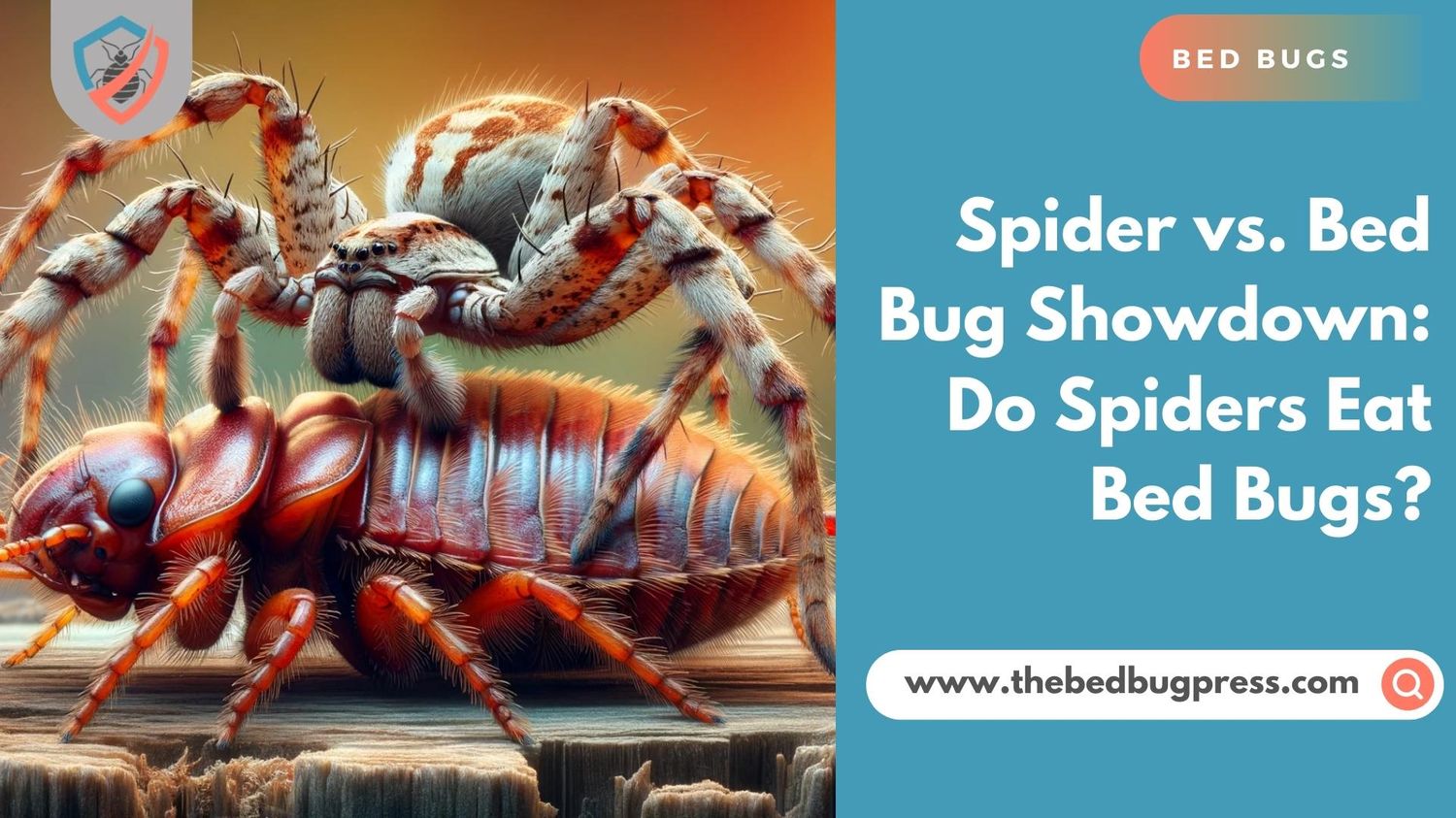Unraveling the mystery of unfamiliar blood spots on bed sheets opens Pandora’s box of possibilities. While bed bugs are infamous for leaving such signs in their wake, they don’t hold the exclusive rights to these tell-tale traces.
There is an array of other potential culprits that could be causing these unsettling discoveries. This exploration aims to illuminate some of these less-known causes, offering much-needed clarity in a situation fraught with uncertainty.
Fleas, mosquitoes, or other biting insects could just as easily be responsible for the blood spots. These pests have feeding habits like bed bugs and could leave behind similar signs. Even certain types of spiders might be to blame.
Alternatively, the cause could be entirely unrelated to pests. Simple factors like minor cuts or abrasions, or even a nosebleed, can result in blood spots on the sheets. Furthermore, pet owners might find that their furry companions could unknowingly be contributing to the situation, especially if they share the bed. Understanding these diverse possibilities forms the first step in effectively addressing the issue at hand.
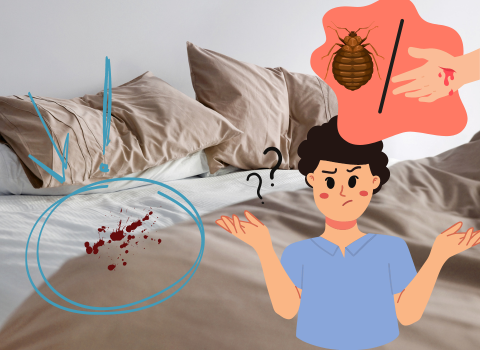
Blood Spots on Sheets: Possible Causes When Bed Bugs Aren’t Present
Discovering blood spots on sheets can be an unsettling experience. While bed bugs are often the usual suspects, they’re not always the culprits behind these stains. Exploring other possibilities can provide valuable insights and help address the issue effectively.
Fleas and Mosquitoes
Both fleas and mosquitoes are known for their blood-sucking habits. Their bites can cause small blood spots on sheets, especially if the person moves or scratches during sleep. These pests can easily enter homes through open windows or on pets, making them common household invaders.
Spiders
Some spiders can bite when they feel threatened, like when a person rolls over them during sleep. These bites can result in small amounts of blood on the sheets. While spider bites are uncommon, they can occur if the arachnid population in your area is high.
Minor Injuries
Minor cuts, scrapes, or skin abrasions can also lead to blood spots on sheets. This is especially common in children who might have sustained minor injuries while playing during the day.
Nosebleeds
Nosebleeds, particularly those that occur during sleep, can result in blood spots on sheets. Dry air, allergies, or physical trauma can trigger nosebleeds, causing unnoticed bleeding that leaves stains on the bedding.
Pets
Pets that share the bed can also contribute to blood spots on sheets. They might have ticks or fleas, or they could have minor injuries that bleed onto the sheets.
In conclusion, while bed bugs are often blamed for blood spots on sheets, they’re not always the source. From other insect bites to minor injuries, and even pets, various potential causes could be responsible. Understanding these possibilities can help in identifying the true culprit and finding a suitable solution.
Decoding the Mystery: Do Blood Stains Always Indicate Bed Bugs?
Blood stains on sheets can be disturbing, often leading to the immediate suspicion of bed bugs. But is this always the case? This exploration aims to decode the mystery and shed light on whether blood stains are a definitive sign of these notorious pests.
Bed Bugs: The Usual Suspects
Known for their blood-sucking habits, bed bugs are often the first culprits that come to mind when discovering bed bug blood stains on bed sheets. However, while bed bug bites can leave blood spots, it’s important to note that other signs of bed bugs, such as live bed bugs, bed bug eggs, or bed bug fecal spots, should also be present for a confirmed bed bug problem.
Other Biting Insects
Biting insects like mosquitoes and fleas can also cause blood stains on sheets. Their feeding habits are like bed bugs, and they can leave behind the same signs. Therefore, a thorough inspection is necessary to differentiate between these pests.
Accidental Injuries
Accidental injuries such as minor cuts or scrapes can also lead to blood stains on sheets. These could occur during sleep or be the result of a pre-existing wound that has reopened.
Nosebleeds
Nosebleeds, particularly those that happen during sleep, can result in blood stains on the bedding. They can be triggered by dry air, allergies, or physical trauma and may go unnoticed until the morning.
Pets
Pets that share the bed can be another source of blood stains on sheets. They could have minor injuries, or be infested with ticks or fleas, resulting in blood spots on the bedding.
In conclusion, while bed bugs are a common source of blood stains on sheets, they’re not the sole cause. From other biting insects to accidental injuries, nosebleeds, and even pets, there are multiple potential sources of these unsettling discoveries. Therefore, it’s essential to consider all these possibilities before drawing any conclusions.
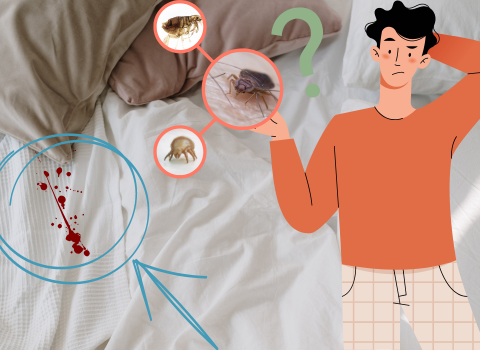
Assessing the Size: How Big Are Blood Spots from Bed Bugs?
When it comes to identifying blood spots from bed bugs, size plays a crucial role. The spots left by these tiny pests are typically small and can range from the size of a pinprick to that of a pencil eraser. They are often rusty or dark brown, caused by the bug’s excrement or an individual unknowingly crushing a bug after it has fed.
Bed bugs feed on blood, and when they do so, they inject an anticoagulant to keep the blood flowing. If the person moves or scratches the bite site while sleeping, it can lead to a small amount of bleeding, resulting in a blood spot on the sheets. However, remember that people react differently to bed bug bites. in the same way. Some people might not bleed at all, while others might bleed enough to cause noticeable spots.
It’s also worth mentioning that the size of the blood spots can be influenced by other factors as well. For example, the stage of the bed bug (whether it’s a nymph or an adult) can affect the amount of blood it consumes and thus the size of the blood spot it leaves behind. Additionally, the duration of feeding can also play a role. A bed bug that has been interrupted during feeding might leave a smaller spot compared to one that has had a full meal.
While the size of blood spots from bed bugs can vary, they are generally small. However, their presence alongside other signs of bed bugs such as live bugs, shed skins, or bed bug eggs can provide a more definitive indication of a bed bug infestation.
No Blood Stains on Your Sheets? Could There Still Be Bed Bugs?
While blood stains on sheets are a common sign of bed bugs, their absence doesn’t necessarily rule out bed bug infestation. Bed bugs are crafty creatures and can leave behind other tell-tale signs that can be easy to miss if one is solely focusing on rusty or reddish stains.
For starters, bed bug bites themselves can be an indication of their presence. Bed bug bites are usually in clusters or a line and appear as small and itchy red bumps. However, it’s important to note that not everyone reacts to bed bug bites, and some people may have no physical reaction at all.
Another common sign of bed bugs is their fecal matter, which appears as tiny dark spots or streaks on sheets, mattresses, and nearby walls. These bed bug droppings are often rusty or dark brown, like the color of dried blood, but they are digested blood excreted by the bugs after their blood meal.
Moreover, bed bugs are known to shed their exoskeletons as bed bugs grow. These shed skins can accumulate around their hiding places and can be a clear indication of a bed bug infestation. Furthermore, in severe infestations, there might even be a distinctly sweet and musty odor, which is released by bed bugs’ scent glands.
Live bed bugs are the clearest indication of an infestation. Bed bugs tend to hide during the day in cracks and crevices around the bed and come out to feed at night.
In conclusion, while blood stains can be a sign of bed bugs, their absence doesn’t necessarily mean that there are no bed bugs present. Paying attention to other signs of bed bugs can help detect an infestation early and allow for prompt treatment.
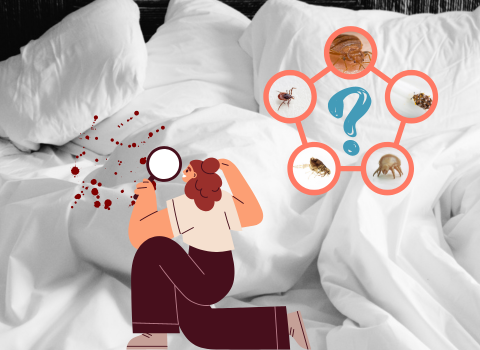
Is It Possible to Have Bed Bugs with No Signs?
Yes, it is possible to have bed bugs without any noticeable signs. Bed bugs are small and often hide in hard-to-reach places, making them difficult to spot. Additionally, their bites don’t cause reactions in everyone, so you may not notice red, itchy bumps that are often associated with bed bug infestations.
However, as the population grows, signs of an infestation typically become more evident. This can include small blood stains or dark bed bug excrement spots on bed sheets, a musty odor, or shed skin. But in the early stages, especially if the infestation is small, these signs may not be present.
Furthermore, even if you do see signs of bed bugs like bed bug bites, it can be hard to confirm they are from bed bugs because many other insects, such as fleas and mosquitoes, leave similar marks. Therefore, the best way to confirm a bed bug infestation is through a professional inspection.
Keep in mind, finding bed bugs early is crucial. If you suspect you might have an infestation, even if you don’t see clear signs, it’s wise to seek professional advice to prevent the problem from escalating.

